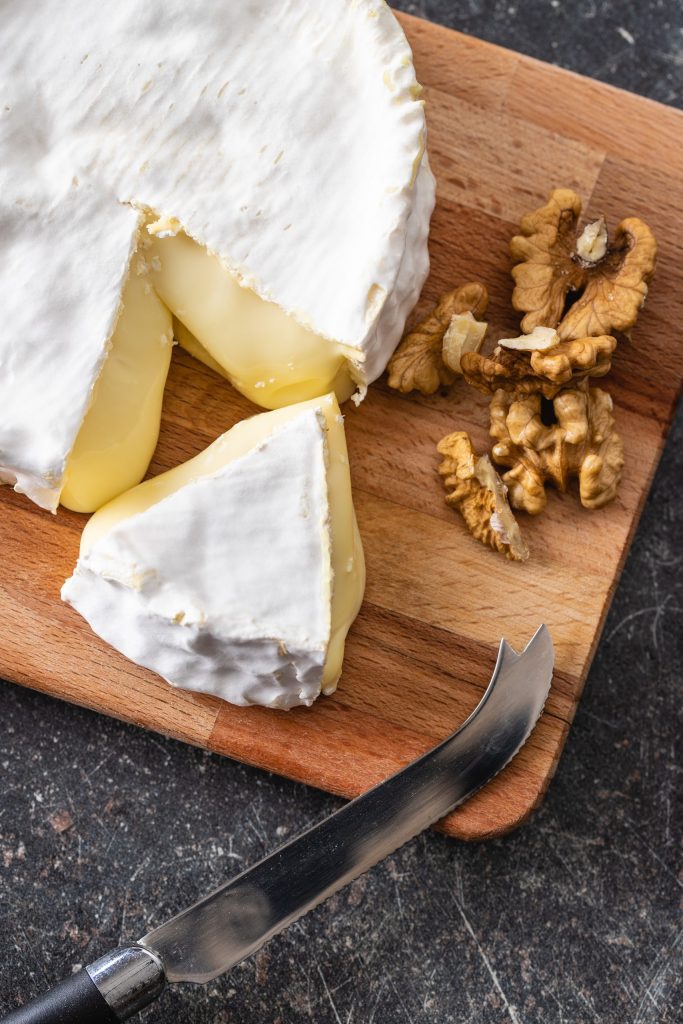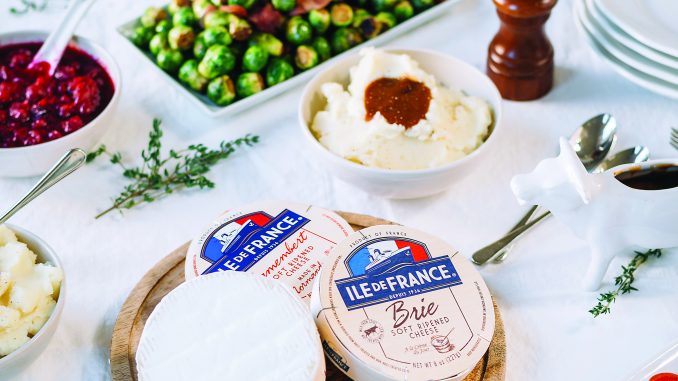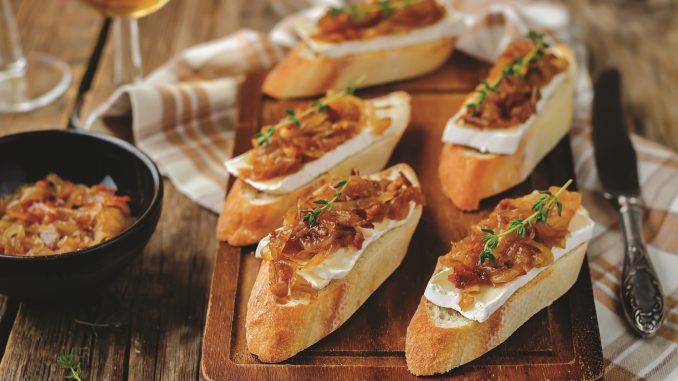Brie: A Look into the Cheese Many Love
August 2, 2020 | 7 min to read
According to legend, Charlemagne discovered his love for Brie in the eighth century at a monastery in Reuil-en-Brie. This beloved cheese emerged from medieval manors where tenant farmers created small-format cheeses using limited milk supplies. As explained by Sebastien Lehembre, Brie became a way to preserve fresh milk in temperate regions, thriving in the unique terroir of its origins. The distinctive snow-white rinds developed in underground cellars, leading to the soft-ripened cheese we cherish today.

According to legend, French Emperor Charlemagne tasted his first bite of Brie in the eighth century at a monastery in Reuil-en-Brie and fell instantly in love with its milky flavor and luscious texture. The king’s favorite—and sometimes called the king of cheese—Brie has become a widely and deeply beloved cheese, sought after and enjoyed around the world. It’s often a gateway to more obscure artisanal cheeses; it’s a cheese nearly impossible not to love.
An Accident Gone Very Right
Brie was born in the manors of medieval times. “The typical manor of northwestern Europe—with its village of peasant tenant farmers, demesne common lands and temperate damp climate,” writes Paul S. Kindstedt in his book “Cheese and Culture: A History of Cheese and Its Place in Western Civilization”, created a peculiar environment for cheese making, which inspired the development of a group of cheeses…that eventually evolved into the much-loved soft-ripened varieties that we know today.”
Tenant farmers were allowed to have their own cow or two, but the animals grazed together on communal lands. With the limited supply of milk, these small-format cheeses were made first by the women of the household with the output from a few milkings. The mild climate meant that the milk could wait for several hours, or even days, without spoiling.
Sebastien Lehembre, senior brand manager at Savencia Cheese USA, based in New Holland, PA, explains that Brie was originally “made in temperate areas, where there was milk available throughout the whole year.” Like all cheese, Brie doesn’t just taste delicious—it’s a mechanism to preserve fresh milk, although only for a relatively short amount of time. “Soft cheeses must be consumed within a few weeks, as compared to the hard alpine-style cheeses, which were made to preserve milk during a long winter,” Lehembre explains. Like all food, Brie evolved from a unique history and terroir.
Those first beautiful snow-white rinds probably formed from storing the cheese in underground root cellars, where the cool and humid environment fostered the growth of yeasts and molds that ripened the cheeses and coated their surfaces. “Peasant cheeses of this type would have borne some resemblance to traditional bloomy-rind varieties, such as Brie de Meaux,” writes Kindstedt. These are the cheeses that evolved into the Brie we know and love today.

Bloomy Cheese
Brie’s downy, edible white rind is often called a bloomy rind, and the whole category is soft-ripened (or surface-ripened) cheese, which includes Brie and its close cousins Camembert, Fromager d’Affinois and St. Marcellin.
These cheeses are aged with mold, like Penicillium candidum or Penicillium camemberti, yeast, or yeast-like fungus, like Geotrichum candidum. The molds literally bloom on the exterior of a cheese as it matures, starting out first as yellowish and furry. As they are gently patted down, they become a bright white, nearly flavorless rind coating the cheese’s surface—the distinguishing mark of Brie and its relatives.
The cheeses age from the outside in. That means that wheels begin to ripen closest to the rind first, and the middle of the wheel of cheese is the last part to ripen—sometimes creating a soft, runny ring just beneath the rind called the creamline—a highly delicious part of the cheese.
This living, breathing rind works to ripen the fats and proteins of a cheese, which is what leads the cheeses to develop the creamy, silky texture that they’re famous for. Once naturally thriving in those medieval cellars, today baby Brie wheels are inoculated with a precise dose of yeast and mold, or these are misted onto the cheeses at the end of production. The whole process is monitored closely by a team of cheesemakers and affineurs.
A Brie’s rind should be evenly thin with no cracks or sinking at the edges. The cheese might smell slightly ammoniated (a chemically, aspirin-like aroma) when you first open it, but that should quickly dissipate. If the smell lingers, it’s a good sign the cheese is past its prime.
There are two kinds of French Brie protected by the French AOC (appellation d’origine controllée or name-controlled cheeses): Brie de Meaux and the smaller Brie de Melun. Both are made with raw milk and matured fewer than 60 days, which means the FDA prohibits them from being imported here. They are gorgeous cheeses, with a hint of locker room funk and aromas of mushrooms being cooked in plenty of butter. Fromage de Meaux, a pasteurized-milk rendition of Brie de Meaux, is available here. It’s excellent, but definitely not the same thing.
From France to…Everywhere
What started as a French tradition has become an international favorite. Brie has been made in the U.S. since the 1930s, which is also when the French cheese took its first journey across the Atlantic to American shores. In 1936, an art deco cruise liner called the Ile de France and the first boat equipped with a refrigeration system brought the first wheels of Brie to the U.S. “That was the beginning of the importation of Brie to America,” Lehembre explains. Today, Ile De France sells French cheeses, especially Brie, around the country.
But Brie can be made in any country and with any kind of milk. The one style of cheese includes a big range in flavor and intensity, from runny triple cremes to fudgy, springy wheels, from incredibly mild to full of mushroomy and deeply funky flavors.
Double-crème Brie is enriched to contain 60% or more butterfat—the AOC Bries contains only 45% fat in dry matter. (A cheese’s fat content is based on fat in dry matter.) Once that number climbs to 75% or more, the cheese is a triple-crème. French cheeses St. Andre, Pierre Robert and Brillat Savarin are triple-crèmes, as is Mt. Tam from Cowgirl Creamery in California. True to their name, the best triple-crèmes are decadent, like a mouthful of savory melted ice cream. At their best, they’re not just buttery but beautifully complex.
One maker in Sonoma, CA, creates a goat Brie, an American twist on the traditional French cow’s milk cheese. The 5-ounce velvety wheel starts to ooze when it’s left at room temperature. “We are making Brie the same way we make it in France,” explains Eric Barthome, CEO of Marin French Cheese and Laura Chenel. “But here in California, we have access to very good quality milk—that is the key. Laura Chenel pioneered goat cheese in America, and by launching goat Brie, we are honoring her legacy.”
Another favorite domestic Brie is Moses Sleeper, crafted by Jasper Hill Creamery in Greensboro, VT. With notes of crème fraîche and toasted nuts, it has a bright, clean finish. Hudson Valley Creamery in Hudson Valley, NY, makes a buttery Brie called St. Stephen, with a pillowy rind and flavors of fresh-baked bread.
More gentle pasteurization and filtration techniques means Brie can be pasteurized without totally destroying its nuanced flavors, a welcome innovation for American cheesemakers and cheese lovers.
Simon Perrier, head cheesemaker at Laura Chenel and Marin French, explains that making Brie “is a very sensitive process. You want to keep the milk as fresh as possible—you have to be very proactive in keeping track of the parameters, the pH and temperature in each step. If you want to save time, you cannot. You have to follow the steps and let the milk work its magic.” When it comes to Brie, there’s no room for error.
When I asked Lehembre about the future of Brie, he told me he was seeing much more flavored Brie on the market, like Brie dressed up with truffles, peppers, herbs and spices. Organic is more of a priority than ever, and customers are paying more attention to the welfare of the animals and the treatment of the environment on the farms and in the cheesemaking facilities. “It’s a whole new world,” says Lehembre.
And yet, when it comes to Brie, customers love the classic. “A Brie is a Brie, and it will remain a Brie,” Lehembre believes. “We see variations but there is no revolution.” No Brie revolution is needed.

A Baguette Is Just the Beginning
Is there anything better than a crusty baguette topped with creamy Brie? Not much, although a crisp glass of Champagne completes the experience. Brie is a star on any cheese board—watch it disappear at lightning speed. Barthome from Marin French likes to pair his with apple and pear slices and a local California beer.
When it comes to wine pairings, Chardonnay has plenty of body to stand up to Brie’s gooey richness; the bubbles in sparkling wine also help cut through the fat. A slightly off-dry Riesling is a great pick to highlight the cheese’s wonderful fresh dairy sweetness. If you’re craving a red, a Beaujolais’ bright red fruit notes will play quite well.
Brie is fun to cook with, too. Baked Brie with jam and nuts is a guaranteed crowd-pleasing appetizer. Brie is fantastic melted into macaroni and cheese, over potatoes, or even on a burger. A note: the rind doesn’t quite melt, so you may want to cut it off, or at least cut the cheese into thin, uniform pieces for optimal melting. You probably don’t need to get all that creative, though. In my house, Brie never lasts too long. DB
2 of 9 article in DeliBusiness Aug/Sept 2020

